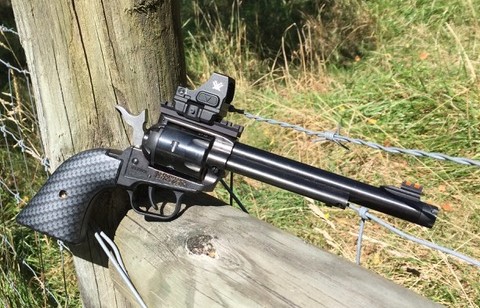
By John Markwell | Contributing Writer
When our buddy Joe dropped off the Rough Rider single action revolver for me to check out, I have to admit to a bit of skepticism about this sixgun’s practicality and quality.
The Vortex red dot sight on the Picatinny rail just didn’t seem “right,” and the “safety lever” protruding from the left recoil shield was a bit hard to figure.
However, I was curious how the revolver would perform considering its $213.99 suggested retail price. On the day this was written, there was a Rough Rider Tactical Cowboy listed on Gunbroker for $167.57, sans optic. Joe paid less than $200 for the revolver and $250 for the Vortex red dot. I thought, “if this just goes bang, I guess it’s a bargain.”
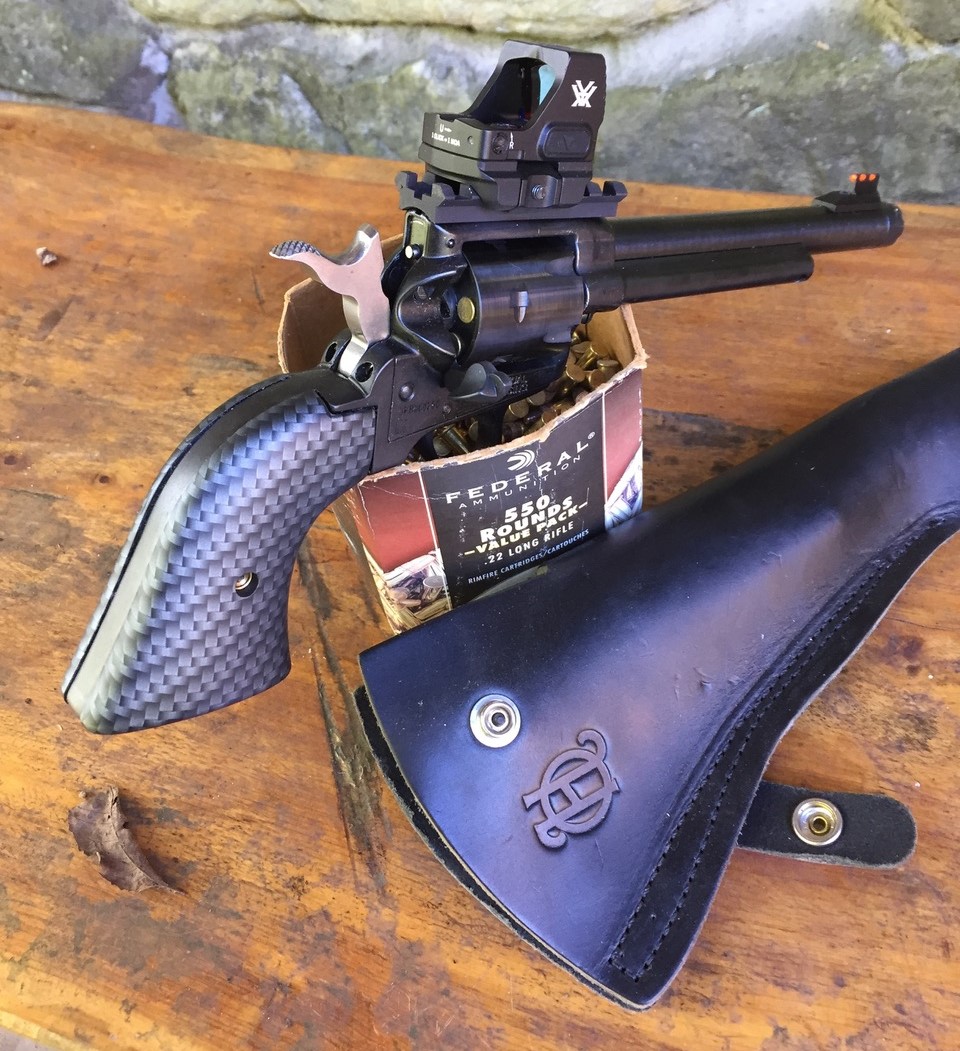
Now, we are the first to acknowledge that we are not well versed in the world of the single-action revolver. We had a .22LR/.22Mag convertible Colt as a kid and, many years later, had Hamilton Bowen do up a custom .44 Magnum on an old 4-digit 3-screw Super Blackhawk that we came into. Until our recent fascination with the handy Ruger Single Sixes in .32 H&R Magnum, those two revolvers constituted our entire exposure to the single action world. The majority of our handgun experience for the last 50 or so years has revolved around the 1911 pistol and Smith & Wesson wheelguns. So, using this rather unique SA revolver would be another adventure in to the world of the gun.
This 6.5-inch barreled revolver from Heritage Manufacturing is catalogued as the “Rough Rider Tactical Cowboy.” The frame is cast from a Zinc alloy and both the barrel and the six-shot cylinder are steel. There is also an accessory .22 WMR cylinder available. The grip frame and ejector rod housing appear to be aluminum.
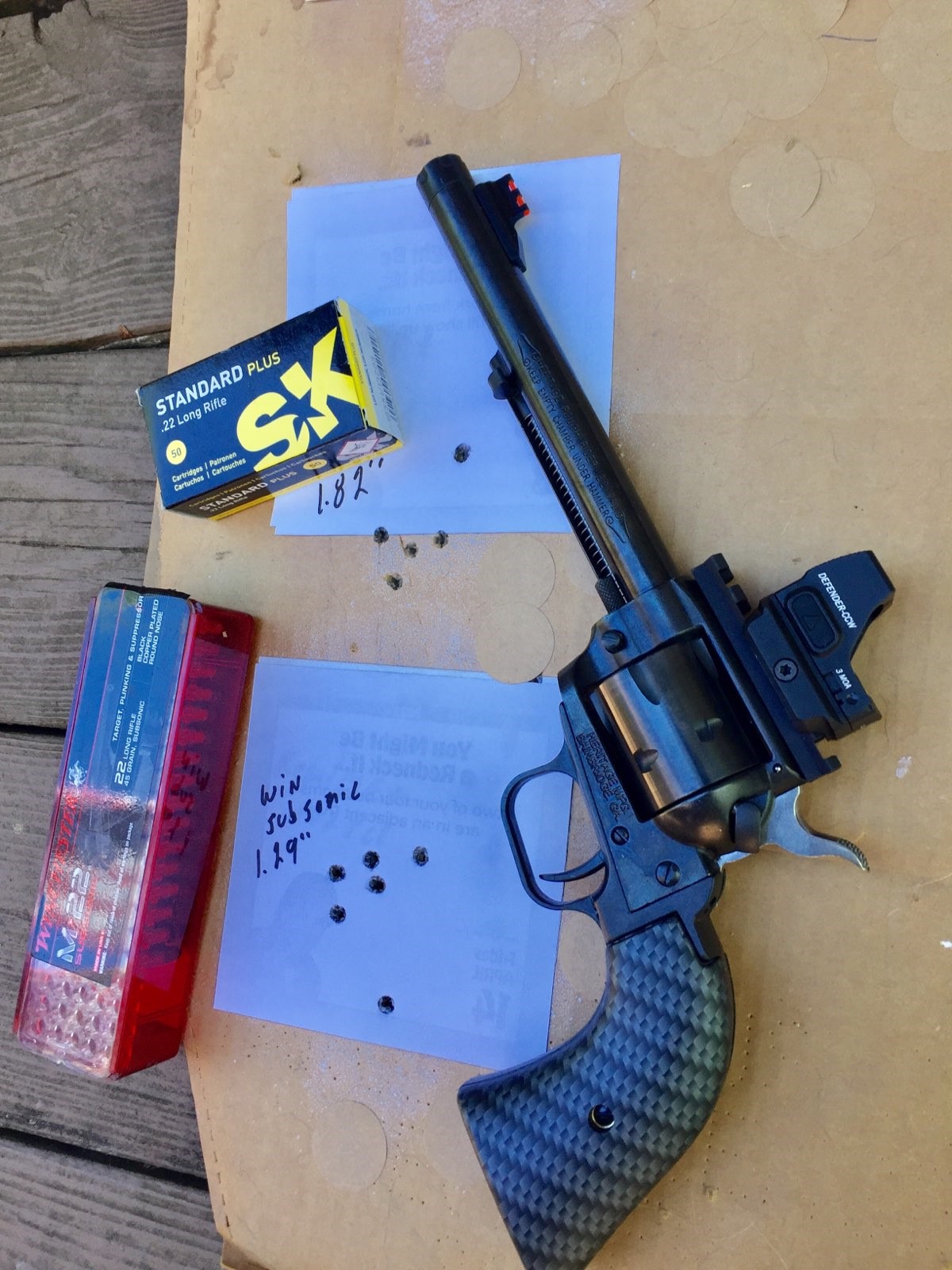
The barrel is fitted with a fiber optic front sight with the frame mounted Picatinny rail serving as both a rear iron sight as well as a mounting interface for a Red Dot or other optic. The smooth stocks are carbon fiber that fit a bit proudly to the back of the grip frame. All the metal work is finished with black oxide which varies a bit in visible finish depending on the metal it’s applied to. Finally, the barrel is threaded for the attachment of a suppressor.
Mechanically the Rough Rider has a traditional 4-click single action mechanism. Click #1 is the traditional safety notch (not to be used); #2 is the loading notch which allows the cylinder to spin. Unlike new model Ruger revolvers, the Rough Rider’s chambers align properly for loading on the second click. The third click is of no consequence; and click #4 is fully cocked and ready to fire.
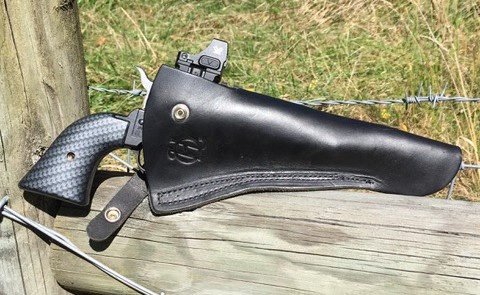
Where the Rough Rider departs from tradition is the incorporation of Heritage’s manual hammer block safety. Activated by a lever on the left side of the grip frame, this is a true safety that blocks the hammer from contacting the firing pin when in the up/forward position. Pulling the lever down/back exposes a red dot and lowers the block allowing the gun to fire. The lever provided both a tactile and visual indication (the red dot) of the gun’s condition.
Does the lever look out of place to someone used to traditional Single Action revolvers? You bet! But, there is a whole new generation of gun owners out there who either don’t know or care. And then there are those who don’t know the difference between traditional and modern single actions with transfer bars. In fact, even with their hammer block safety system, the Heritage folks recommend NOT carrying their revolvers with a round under the hammer just like traditional six-gun owners have done for years. Load one chamber, skip one then load four and fully cock the hammer and carefully lower it on the empty chamber.
So, how does this economical revolver shoot? To answer that question, we headed up to our bench for some testing and chronographing of an assortment of .22 Long rifle ammunition. We didn’t know what to expect in regards to the Rough Rider’s accuracy, reliability and handling qualities.
One thing we were not concerned about was the trigger pull! For an economy revolver, the 2.5-pound trigger release was a real surprise. The trigger broke cleanly with no creep and only a slight bit of over travel. I’ve seen guns costing lots more than the Rough Rider that didn’t have a trigger nearly as nice as the one on this model.
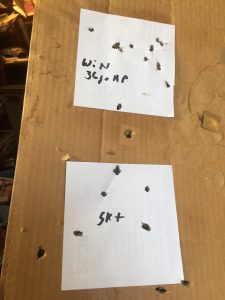
The “WHOA” moment! I’ll keep this paragraph short and to the point. Up at our bench for its first outing, the Rough Rider did go bang every time the trigger was pulled and almost every round fired impacted the 4-inch white aiming squares at 25-yards; that was the good news. The bad news was that almost every hole in the target was oblong, not round. This sucker was key-holing almost every bullet regardless of the ammo brand.
Joe was not too happy about the revolver’s performance and after a bit of hassle and some hoop-jumping, he returned the Rough Rider to the folks at Heritage and, in due time, received a replacement.
So, several months after first laying hands on the Rough Rider we once again ended up at the bench to repeat the 25-yard ammo testing with the replacement revolver. The results were gratifying and, all the bullet holes were round this time.
Ammunition Velocity/fps 25yd group size/best 5 of 6
Winchester Super X .37gr HP 892 1.80
SK Standard Plus 617 1.82 (4=.79”)
Win. sub-sonic 45gr 836 1.29
Win. 40gr.HV 877 2.12
Accuracy wise, the Rough Rider has a lot of potential. Admittedly, our old eyes don’t get along well with red dot sights, seeing a lightning bolt instead of a true dot on most days is common for us. The Vortex defender-CCW red dot sight with its 3MOA dot presented no problems at all for our son Brock, who shot the best groups with the Rough Rider. Joe needs to do some more ammo testing when he gets the revolver back. I’d bet he will find a .22 Long Rifle loading that will improve the groups above and be more than adequate for both plinking and small game hunting.
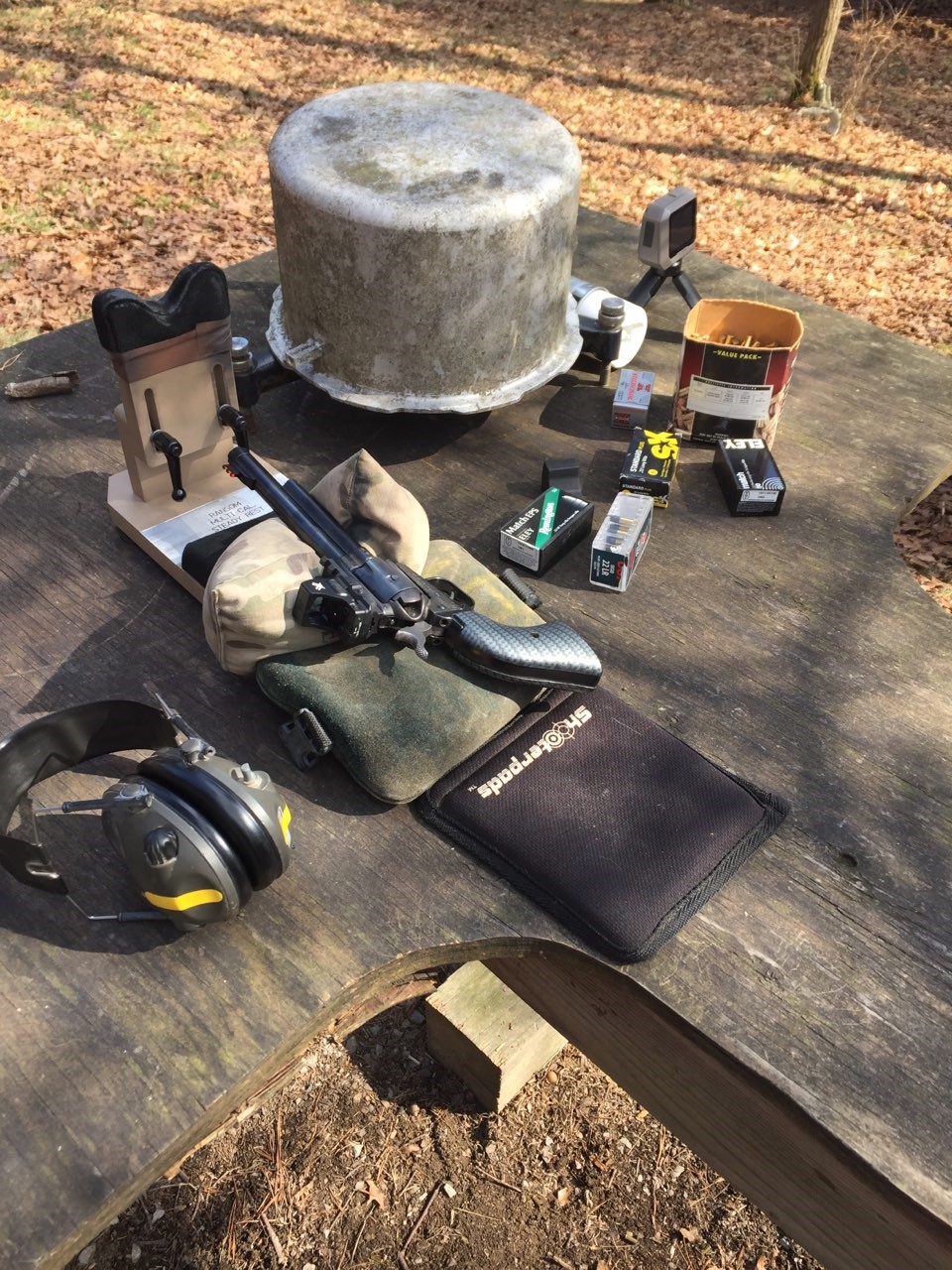
We actually shot the rough rider quite a bit and the reliability of this economy revolver actually surprised us. There were no mis-fires or mechanical glitches of any sort; the gun just plain worked! Handling qualities of the Rough Rider were, well, a bit rough. Cocking the hammer was definitely not as slick as our Ruger Single Sixes and, when loading the chambers, the cylinder sort of “clunked” into alignment when indexed. The chambers did, however, correctly click into place for loading/case ejection, unlike New Model Ruger single actions.
In the final analysis, the Heritage Rough Rider Tactical model is a pretty good value for the money. For the budget minded shooter, the Heritage Company offers a dizzying array of models of this robust .22 caliber single action revolver. With barrel lengths from four to sixteen inches, dozens of different finishes and a variety of grip frame and sight options, there is a model available to meet the tastes and needs of most any shooter. And, as our experience with Joe’s Rough Rider has shown, the Customer service of Heritage Manufacturing Company is as good as any in the industry.
For more information go to Heritage Manufacturing – Revolvers & Rifles (heritagemfg.com).



